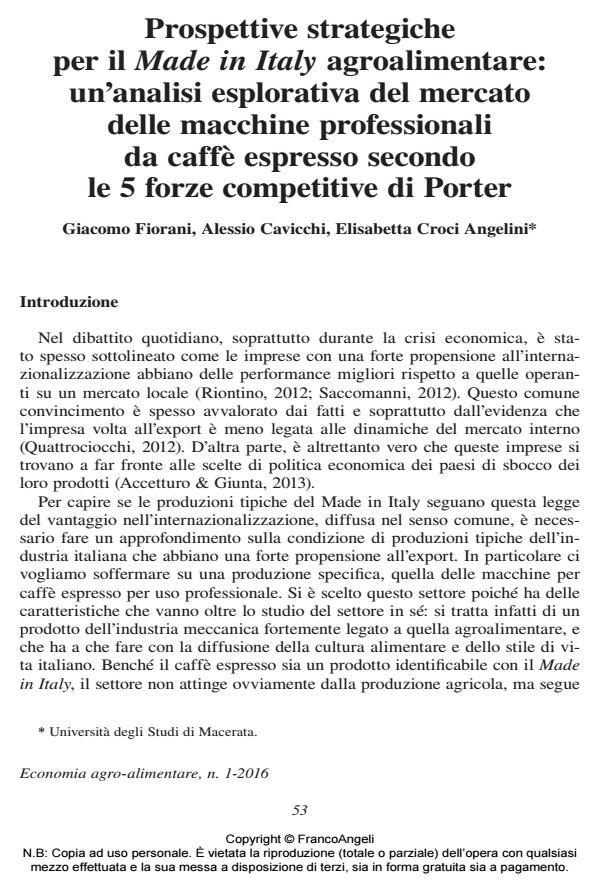Prospettive strategiche per il Made in Italy agroalimentare: un’analisi esplorativa del mercato delle macchine professionali da caffè espresso secondo le 5 forze competitive di Porter
Titolo Rivista ECONOMIA AGRO-ALIMENTARE
Autori/Curatori Giacomo Fiorani, Alessio Cavicchi, Elisabetta Croci Angelini
Anno di pubblicazione 2016 Fascicolo 2016/1
Lingua Italiano Numero pagine 19 P. 53-71 Dimensione file 160 KB
DOI 10.3280/ECAG2016-001004
Il DOI è il codice a barre della proprietà intellettuale: per saperne di più
clicca qui
Qui sotto puoi vedere in anteprima la prima pagina di questo articolo.
Se questo articolo ti interessa, lo puoi acquistare (e scaricare in formato pdf) seguendo le facili indicazioni per acquistare il download credit. Acquista Download Credits per scaricare questo Articolo in formato PDF

FrancoAngeli è membro della Publishers International Linking Association, Inc (PILA)associazione indipendente e non profit per facilitare (attraverso i servizi tecnologici implementati da CrossRef.org) l’accesso degli studiosi ai contenuti digitali nelle pubblicazioni professionali e scientifiche
It is well known that the agri-food industry represents an important leverage for Italian exports. Espresso coffee is one of the drivers of this industry and is one of the key Made in Italy assets. Exporting espresso means spreading Italian culture. In fact, Espresso is widely associated with the Italian way of life, even though agricultural coffee production takes place very far from Italy. The connection between espresso and Italy is not provided only by the consumption culture, but also by the production of machinery for espresso preparation. Italian firms are an example of excellence in the production of traditional espresso machines. The development of the international horeca (hotel-restaurant-café) sector provides an opportunity for both the espresso producers and the connected industrial sectors, to improve their position in the international markets. This article presents an analysis of the coffee machine sector, with particular regard to its connections with the horeca sector. Porter’s framework of five forces is used to show the competitive environment in which the interested sectors operate. A snapshot of the relationships within the espresso coffee sector is taken using analysis of a variety of sources. The focus is on professional coffee machines and the possible development of this industry. Through a collection of secondary data, this article highlights the challenges faced by the espresso coffee machines manufacturers. On one hand it demonstrates that it is possible to spread Italian culture through coffee consumption. On the other hand, new global challenges are emerging, such as the growing coffee capsule market.
Parole chiave:Espresso, coffee, five forces, coffee machines, horeca
Jel codes:Q13, L66, M31
Giacomo Fiorani, Alessio Cavicchi, Elisabetta Croci Angelini, Prospettive strategiche per il Made in Italy agroalimentare: un’analisi esplorativa del mercato delle macchine professionali da caffè espresso secondo le 5 forze competitive di Porter in "ECONOMIA AGRO-ALIMENTARE" 1/2016, pp 53-71, DOI: 10.3280/ECAG2016-001004